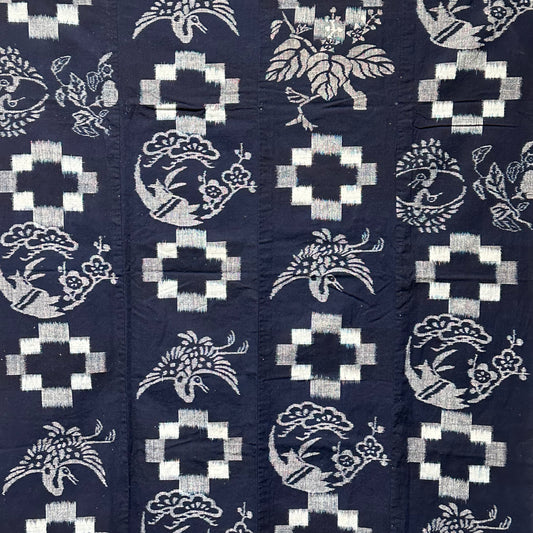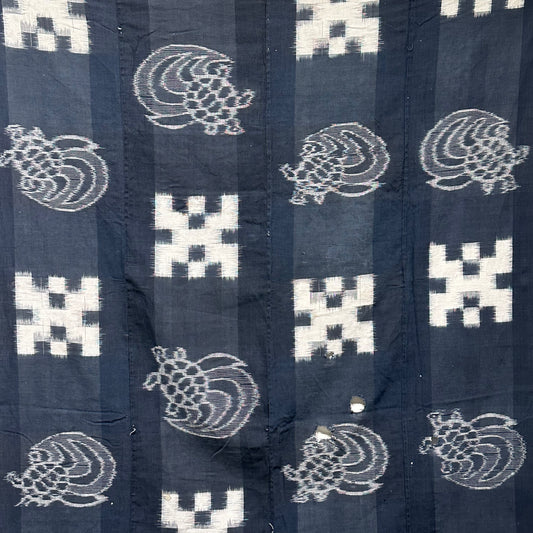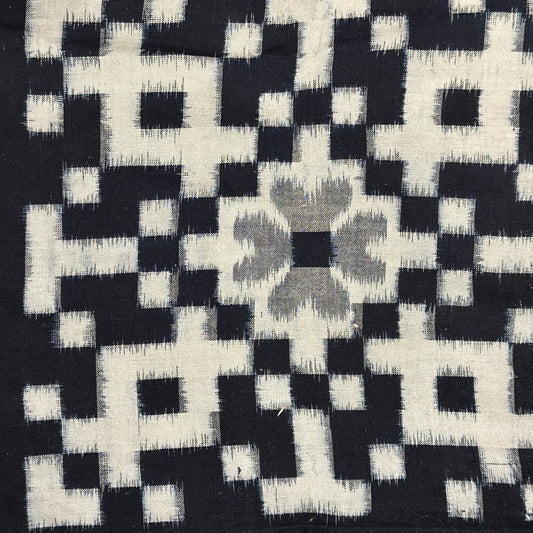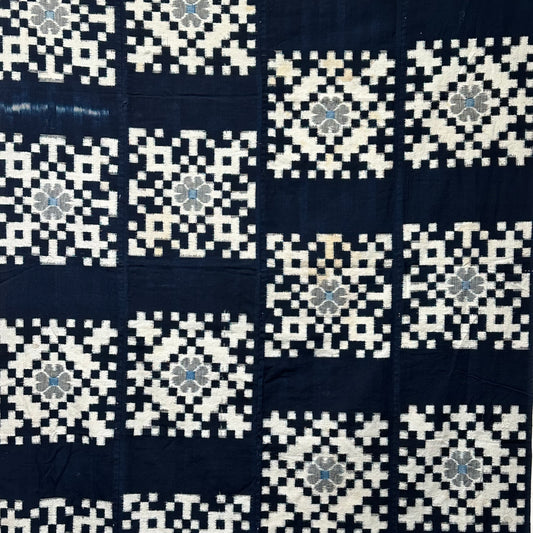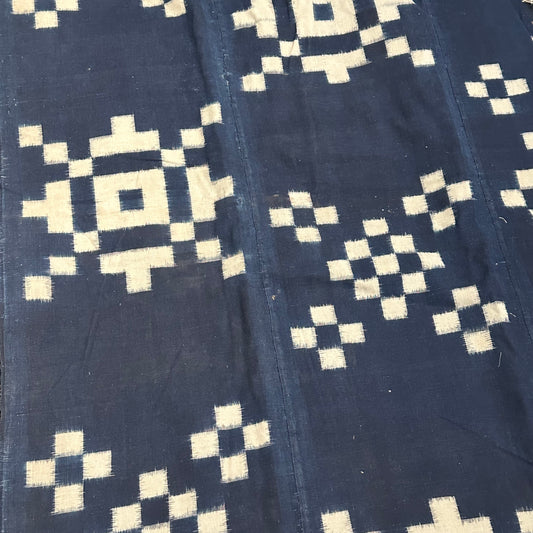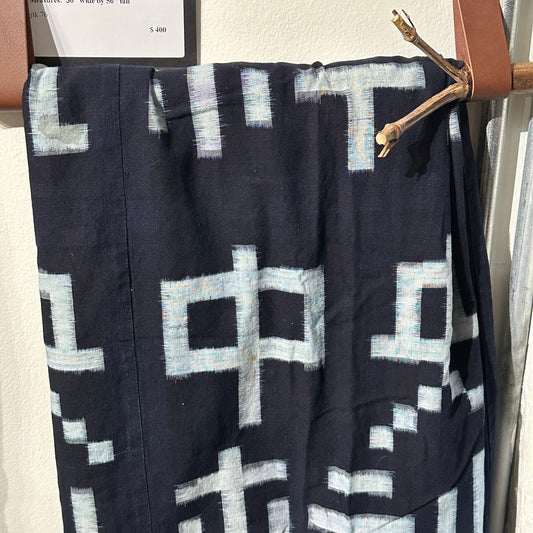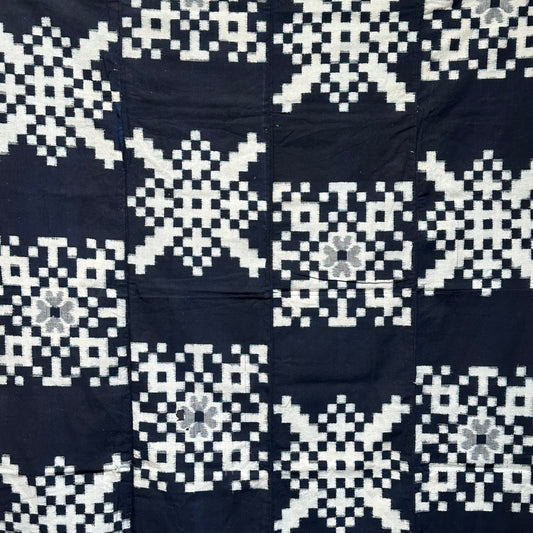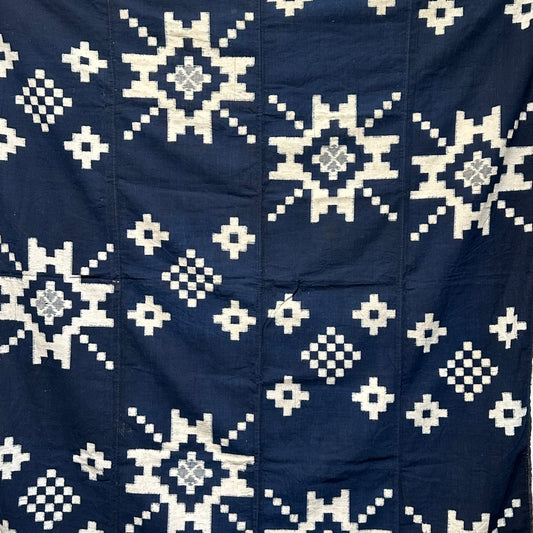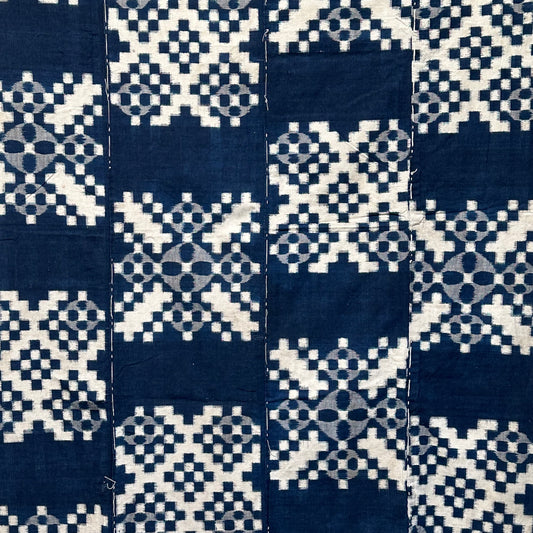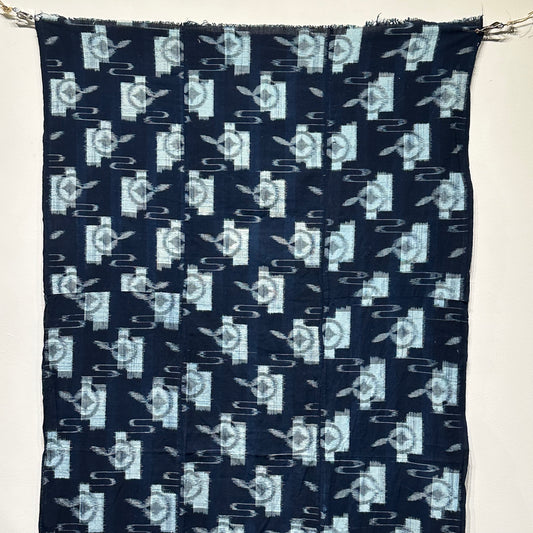Collection: Kasuri Ikat Weaving
Kusuri weaving is a traditional textile art known for its distinctive, blurred-edge patterns. Originating in the early Edo period (1603–1868), this technique was influenced by similar ikat weaving traditions from Southeast Asia, adapted and refined by Japanese artisans into something uniquely Japanese. The name kasuri translates to “blur” or “haze,” reflecting the characteristic look of its patterns.
The process of kasuri is complex and requires remarkable skill. Artisans carefully tie and dye individual threads in specific sections before weaving, creating patterns that emerge with a subtle, blurred effect as the threads align. This painstaking technique is used to create traditional Japanese patterns, including geometric shapes, floral motifs, and scenes from nature. Each design carries cultural symbolism – for instance, cherry blossoms represent the beauty of life, while waves symbolize resilience.
Kasuri was initially popularized by rural communities and later became an important cultural symbol, especially in regions like Kurume, Okinawa, and Iyo, each of which developed its own style of kasuri. Beyond its beauty, kasuri is celebrated as a craft that honors patience, precision, and a deep connection to nature and heritage. Today, it remains a treasured part of Japan’s textile tradition, representing both artistry and history in every intricate, blurred-edge design.


